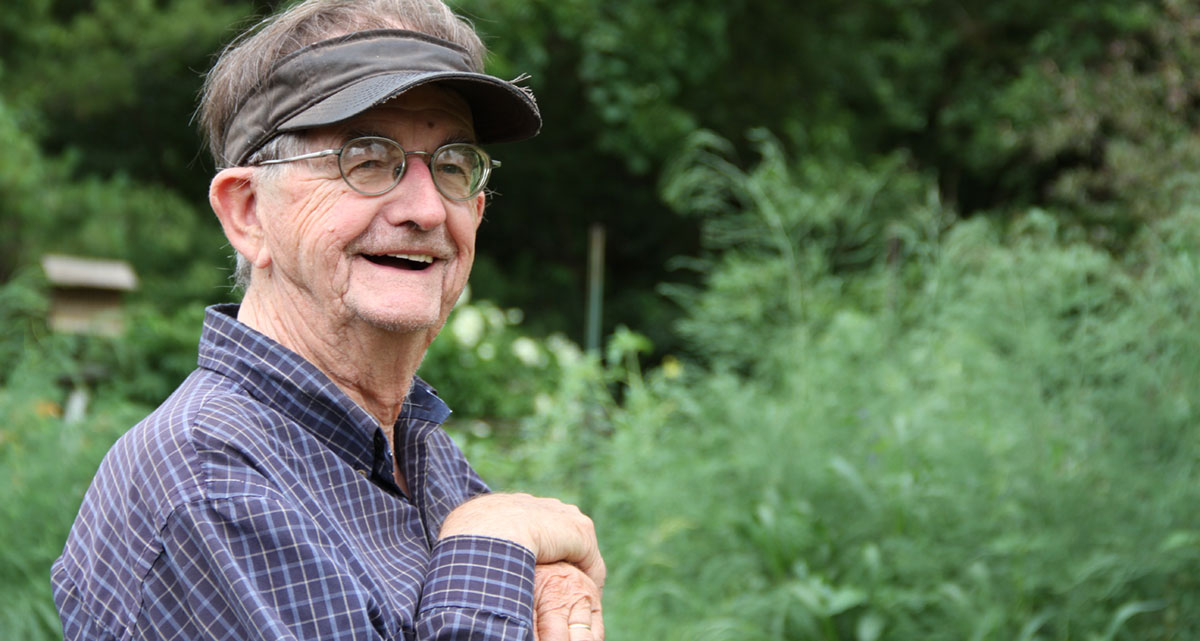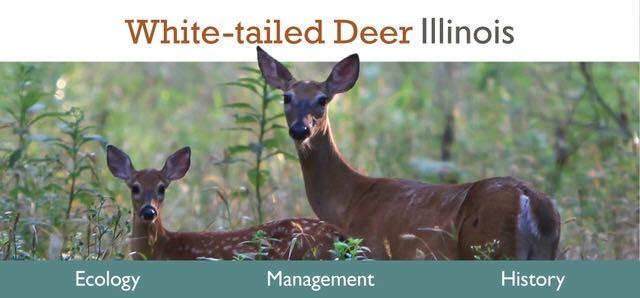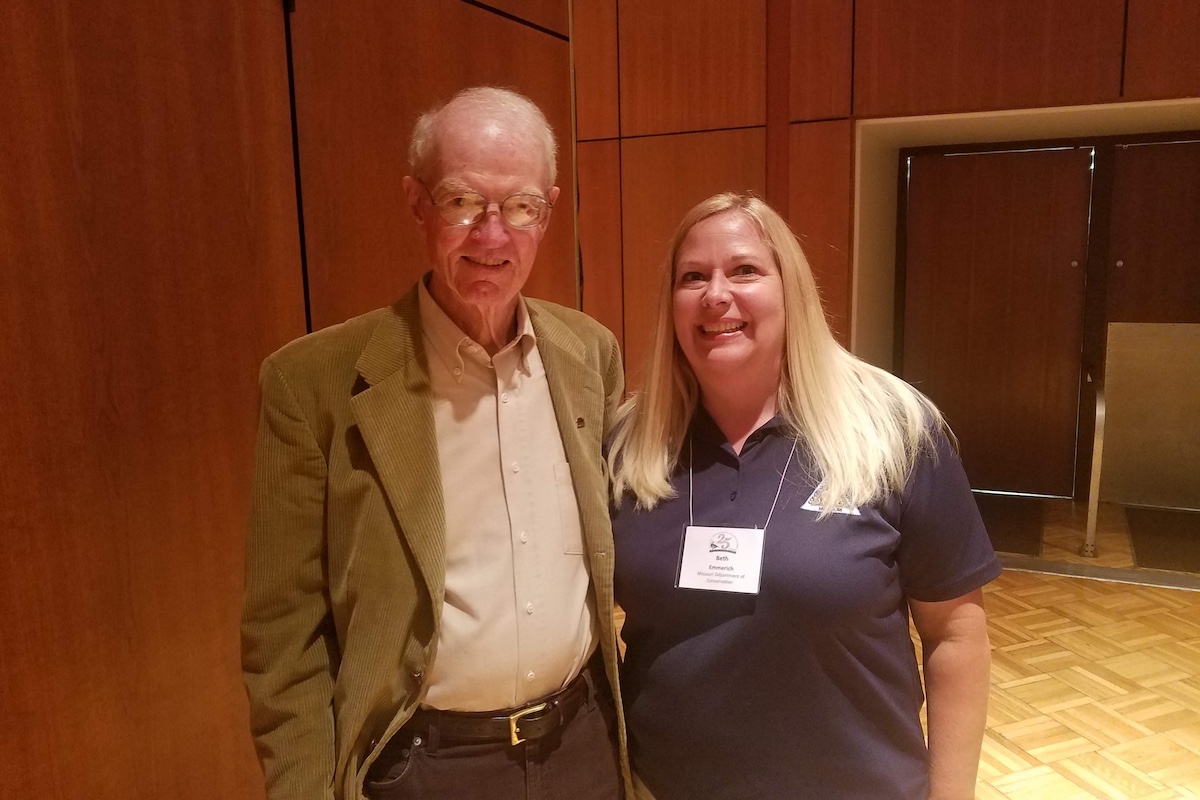
This series of articles asks long-time wildlife conservation leaders from Illinois a series of questions about themselves, changes in wildlife conservation during their careers, and what they feel are the biggest wildlife management changes and challenges today.
I recently spent a pleasant morning with my old boss Chuck Nixon in the backyard of his home in Monticello. Chuck and I had worked together on a long-term deer research project at the Illinois Natural History Survey (INHS) back in the 1980s, and on a few other projects since. Nixon is perhaps best known for his years of research and publications on forest wildlife, with 118 citations from his work at the Survey alone, and he is still writing! In 1975 Nixon received the prestigious international Wildlife Publication of the Year award from The Wildlife Society.
Nixon hails from Newton, Massachusetts. After finishing his bachelor’s degree at Northeastern University, and then his master’s at Penn State in 1959, he was hired by the Ohio Department of Natural Resources as a research biologist, moving to the Illinois Natural History Survey in 1970. Although he retired from the Survey as a Professional Scientist in 1994, he has continued to write and remains active with both INHS and with the deer management program at the University of Illinois’ Robert Allerton Park. He also is an Illinois Master Gardener.
As another former employee and colleague of Nixon’s once remarked, and many wildlife professionals would agree, “There are few, if any, better woodsmen than Charlie Nixon.”
OIWJ: Was being a wildlife biologist your first career choice? When did you know that you wanted to be a wildlife biologist?
NIXON: Yes, wildlife biology in some form was my first career choice, although when I started college at Northeastern I was in a straight biology program, a premed type of curriculum. I decided that was not for me, so in graduate school at Penn State I majored in wildlife ecology.
OIWJ: Who were some of the early mentors in your wildlife career, and how did they influence your own career?

NIXON: I would have to say probably my two bosses I had over my professional career. Robert Donohoe was my supervisor when I was a research biologist in southern Ohio for the Ohio Department of Natural Resources, and Glen Sanderson was my boss during my professional career with the Illinois Natural History Survey. I certainly admired many other wildlife biologists when I began my career, including Dr. Tony Peterle who worked at the Ohio Cooperative Wildlife Unit and then later at Ohio State University. I also admired the Craighead brothers, Dr. Frank and Dr. John Craighead, the twin brothers best known for their work on the grizzly bears in Yellowstone. There were many others. Both Donohoe and Sanderson worked with great integrity, and were professionals in every way.
OIWJ: When you began your career, what did you feel was the most pressing or urgent concern for wildlife conservation?
NIXON: The most pressing need on the state level was to get political pressure and politicians out of the hiring and decision-making process. I was pretty naive in the beginning of my career to think the idea was to foster what was best for wildlife—I soon found out the reality was far different.
OIWJ: What aspect or element of your own career are you most proud of, and why did you pick that?
NIXON: I suppose the one aspect of my Illinois career that I am most proud of is helping young biologists earn higher degrees and start careers in the profession. Lonnie Hansen, Steve Havera, Jim Chelsvig, Jim Herkert, Dwayne Etter, Paul Brewer—I hope I helped them all to get going. It is always satisfying to pass on a profession to the next generation.
OIWJ:What do you feel is the most urgent problem facing wildlife conservation today?
NIXON: The most urgent problem today is how to maintain wildlife in the face of the human population explosion. As wildlife habitats continue to become more and more fragmented, wildlife populations become more difficult to maintain. I do not envy the difficult tasks facing the next generation of wildlife biologists.
OIWJ: In your opinion, what was the biggest change occurring in the field of wildlife research and management during your career?
NIXON: The biggest change . . . I would say the rise of the environmental movement and its impact on how biologists do their jobs. First the support for many worthwhile programs is helping, but second—and often because of poor communication—the mistaken support for bad science that often makes things more difficult for biologists and for wildlife.
Paul Brewer is a veteran Illinois wildlife biologist, beginning his career as a research technician with the Illinois Natural History Survey. After a long career as a district wildlife biologist, he retired as manager of the Wild Turkey Project in IDNR’s Division of Wildlife Resources. Paul continues to remain active in the wildlife field and in working with prescribed fire management, and enjoys managing habitat for wildlife on a small Hutton Township farm in Coles County. He is currently President of the Illinois Chapter of The Wildlife Society.(http://wildlife.org/illinois-chapter/)












Submit a question for the author